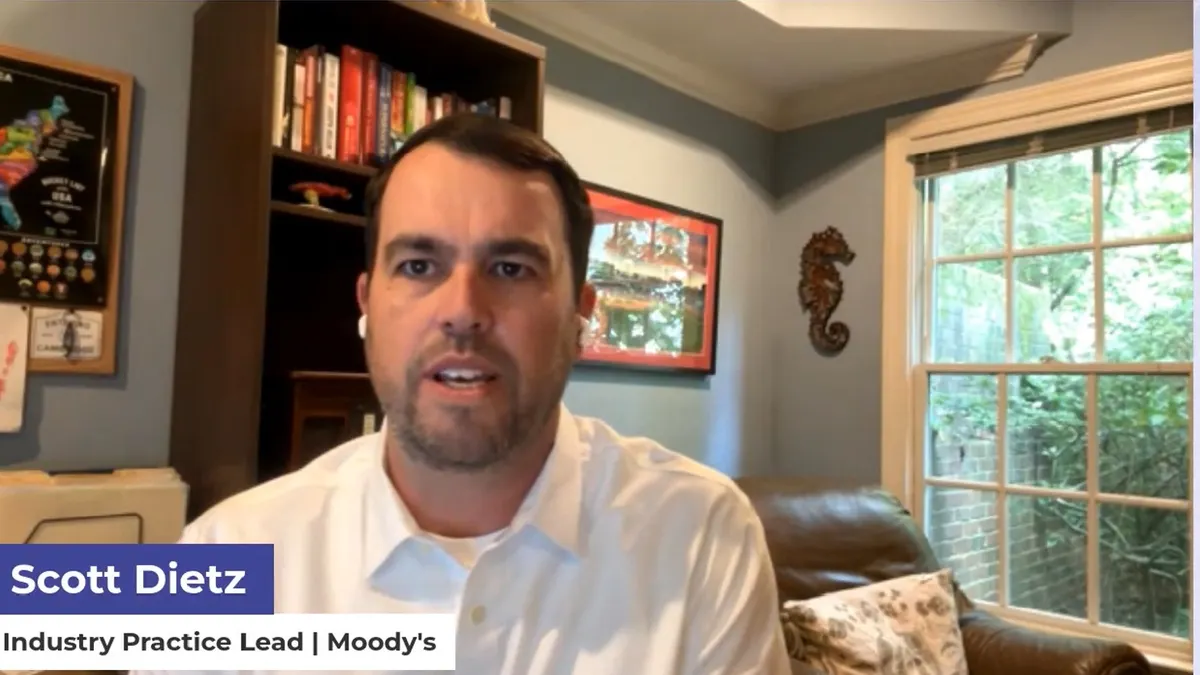Annual planning has always been a great opportunity to reflect on past progress. But, this year, it’s all about the future—and for Finance, that future includes AI.
From Marketing to Operations to HR, every department is evaluating where AI can drive value, improve speed, reduce cost or boost decision-making confidence. Finance is no exception. However, unlike other departments, you’re also being asked to measure AI’s impact and justify that the investments reach target ROIs.
That’s no small task. And, while CFOs and their teams are under immense pressure to understand, scale and deliver in a workplace that’s increasingly dominated by AI hype, many are overworked and burned out by an ever-growing list of requests. It’s reaching crisis levels: half of finance and accounting leaders report symptoms of burnout.
Fortunately, AI is here to help Finance and the rest of the business. But what’s the actual impact? On what processes? Are workers ready? How do you balance workforce plans and AI investments? And, how much will it all cost?
Most businesses have begun to embrace AI. Now, they’re trying to quantify its ROI. But, unlike traditional investments, AI doesn’t follow a clear dollars-and-cents formula. Instead, it operates at the task level, not just the transaction level. And its value often shows up as efficiency, accuracy or insight gains, not just revenue or expense line items. This creates a unique challenge for Finance: leadership expects results, but the KPIs for AI success aren’t always predefined or easily measurable.
While AI’s ROI has yet to be understood clearly for many use cases, you still need to plan for it. This year, instead of reflecting on the past, it’s time to create a future-ready planning process that enables a workforce augmented by AI and incorporates new methods to track, model and explain AI’s value to the business.
AI changes how businesses plan
AI is no longer a theoretical disruptor—it’s actively reshaping how businesses operate and shifting the tone in the boardroom from how AI will drive value to how AI is driving value. That shift brings new urgency and complexity to this year’s planning season.
A McKinsey survey found that nearly 80% of organizations are regularly using AI. The research also shows that teams are consistently seeing both revenue increases and cost reductions due to AI, in addition to delivering harder-to-measure benefits like insights, efficiency and accuracy across a vast array of use cases.
The range of AI use cases is expanding quickly. Because AI can be applied to so many processes in so many diverse ways, planning becomes even more complex, especially when trying to quantify the value, calculate ROIs and build models and forecasts for the wider business. So, Finance is stepping into a more strategic role, one that involves modeling investments in AI-enabled tools, estimating gains and helping leadership understand where the impact is real and where it still needs to be proven.
However, since AI is relatively new, few organizations have years of historical ROI data to inform AI decisions. Therefore, Finance will want to plan for a lean, AI-augmented workforce and expect AI-enabled tools to fill any gaps. Determining how much to invest in AI versus headcount is where it gets murky, as is determining which KPIs best signal that AI is working as planned. Many CFOs are preparing by defining new KPIs to capture the value of AI’s indirect benefits, like accuracy, agility and insight. They’re also evolving how Finance approaches planning, forecasting and performance measurement to reflect this new reality.
It’s not workers or AI, it’s workers plus AI
As AI continues to move across the business, it’s easy to fall into a binary mindset of choosing to invest in people or technology. But the real opportunity lies in combining the two by augmenting your workforce with AI to unlock qualitative and quantitative value across the business.
Eliminating just 10 hours of work per worker weekly, for example, enables them to accomplish more and at a higher quality, no matter what department they’re in. It also gives them more time to make strategic decisions, think critically and further improve processes or outcomes. An efficient, right-sized workforce enabled with the right technology delivers more value per dollar.
Your planning opportunity lies in balancing AI’s impact with headcount optimization. Collaboration between Finance and the business helps identify high-impact AI use cases that drive the right outcomes according to plan. Working together also helps you prioritize any necessary technology upgrades, reskilling and upskilling, personnel redeployments and other workforce needs.
As you engage with business leaders, it’s up to them to answer many of the questions about the value AI brings to their team. This builds AI literacy across Finance and the broader organization. Questions Finance can lead with in planning sessions include:
- How is your department planning for AI-driven efficiencies?
- What outcomes do you expect from those changes?
- How will AI’s value show up in the P&L, balance sheet or cash flow?
- What metrics matter most today (e.g., cost to serve, revenue per employee)?
- What new metrics can we start tracking (e.g., AI adoption rate, prediction accuracy)?
With such a focus on metrics, particularly new ones, this planning season is a great time to create shared dashboards to track AI investments and impacts. What gets measured gets managed, as they say and shining a spotlight on AI’s value and ownership is a sure tactic for driving success.
A new toolkit for Finance to accelerate AI’s impact
To adapt effectively to this new workforce-plus-AI equation, Finance needs the right tools to lead the business into this next phase of transformation.
Outdated workforce planning tools and siloed systems often slow down the production of necessary reports, forecasts and other insights. That’s counterproductive right when Finance is being asked to speed things up. And, any collaboration friction, dashboarding limitations and data integration gaps can add to the frustration.
Modern workforce planning solutions make it easy for Finance to partner with HR and the business to:
- Accurately forecast AI-driven productivity and capacity gains
- Align talent and technology investments across teams and business units
- Identify roles to automate, upskill or evolve
With everyone working together and from the same platform and shared data, it’s easier to create an effective workforce plan that also provides the agility to shift people and investments as you gain clarity on AI’s business value.
Financial planning, coupled with workforce planning, completes the circle with speed, accuracy and confidence so you can move beyond manual, spreadsheet-driven financial performance management. You’re then enabled with more time to focus on growth by:
- Determining which AI investments to fund strategically
- Using scenario modeling to forecast AI’s financial impact
- Measuring results against KPIs and strategic outcomes
Instead of Finance manually finding, tracking and reporting on AI metrics, the right tools automate the tracking of cycle times, error reductions, hours saved, employee satisfaction and more—in Finance and across the business.
Better planning today maximizes AI’s impact tomorrow
If equipped, Finance can take the lead in helping the business understand and scale the impact of AI. This involves monitoring leading indicators, creating Finance-owned AI scorecards that incorporate both quantitative and qualitative metrics and capturing indirect returns, such as improved agility, faster decision-making and better cross-functional alignment, as part of AI’s broader ROI story.
To deliver on AI’s potential, Finance must take a more holistic planning approach, one that integrates people and technology. However, you can’t help the rest of the business benefit from AI if you’re bogged down by inefficient tools and outdated tactics. To create a planning process for the AI era, here’s where to begin:
- Build your AI ROI framework using the metrics mentioned above as a guide.
- Modernize your workforce and financial planning tools so Finance has the time, insights and confidence to act decisively.
- Track the right metrics that matter for your business, on a shared platform that delivers reports, dashboards and guidance decision-makers trust.
This year, embrace AI as an integral part of your planning process. By modernizing your tools and aligning teams around shared metrics, Finance can lead the business in unlocking AI’s exciting full potential—enterprise-wide.










